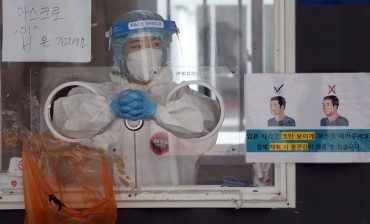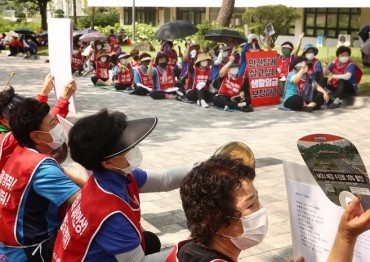
Hong Nam-ki, vice minister of science, ICT and future planning. presides over a science and technology policy meeting in the ministry’s building in Gwacheon, Gyeonggi Province, on June 26, 2016. (image: Ministry of Science, ICT and Future Planning)
SEOUL, June 28 (Korea Bizwire) – As hybrid products have become a global trend, the South Korean government announced a project Monday to create synergy between its advanced science technology and the country’s cultural heritage.
Under the inter-agency initiative, the government aims to help modernize and commercialize Korea’s traditional cultural assets, according to the Ministry of Science, ICT and Future Planning.
It has set the goal of devising 20 kinds of “K-product,” capitalizing on the country’s traditional culture, by 2025.
The new market is expected to be worth 1.4 trillion won (US$1.1 billion), the ministry said, adding it hopes to create 2,700 jobs.
A task force, tentatively named “Tradition Renaissance Support Team,” will be launched within this year to spearhead the project.
The plan, approved earlier in the day at the state science and technology policy meeting, is part of efforts to replace the so-called “Korea Discount” with “Korea Premium.”
South Korea is globally known for K-pop or K-dramas, highlighted by the Korean Wave, but the country preserves a wealth of cultural heritage including traditional crafts, ceramics. food, clothing and construction.
South Korea’s traditional culture sector was valued at around 2.5 trillion won in the latest official research in 2010. It accounts for roughly 30 percent of the country’s whole culture industry.
South Korea has successfully commercialized some of its traditional cuisine. But there is much to be desired in the manufacturing industry.
More than 80 percent of South Korean firms were founded after the 1980s, while Japan has more than 3,000 companies that were started at least 200 years ago, the ministry noted.
It has picked three items to spearhead the long-term K-product project: 3D printing material, a high-quality kitchen knife and probiotics known to be rich in cheonggukjang, a traditional Korean food made from fermented soy beans.
For instance, the Korea Institute of Science and Technology is working to develop a new 3D printing material that is not harmful to the human body with cypress and other woods used for Korea’s traditional furniture.
(Yonhap)






